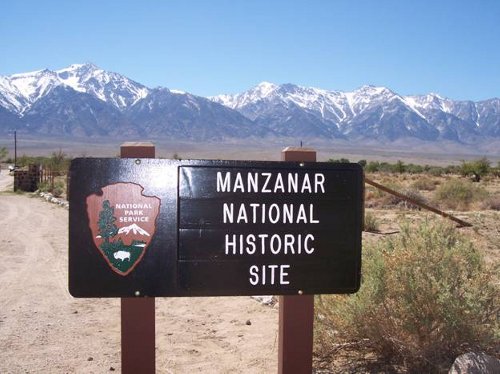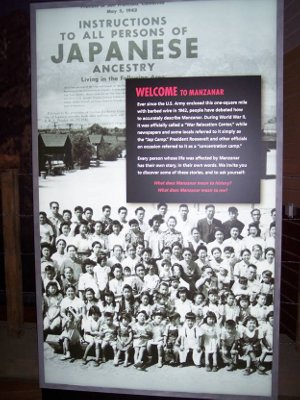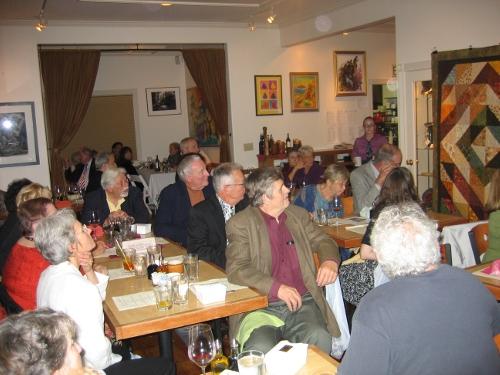
Manzanar War Relocation Center was one of 10 camps at which Japanese American citizens and resident Japanese aliens were interned during World War II. It is located at the foot of the imposing eastern Sierra Nevada mountains off highway 395 between Lone Pine and Independence in Inyo County, CA. In April, 2004, the National Park Service opened the Manzanar National Historic Site Interpretive Center in the adaptively restored high school auditorium. The center includes 8,000 square feet of exhibits, two small movie theaters, a bookstore and park offices. Photo by Susanne La Faver.
HIDDEN VALLEY LAKE – The public is invited to hear “Supporting Japanese American Internees at Manzanar Relocation Camp,” a free historical presentation for Stone House Historical Society ( www.lakecountystonehouse.com ) at 10 a.m. Tuesday, Nov. 3, in the Hidden Valley Lake (HVL) Activity Center.
The activity center is located at 18174 Hidden Valley Road, adjacent to Hidden Valley Lake administrative offices. HVL visitors announce at the gate that they are attending the Stone House meeting and entrance will be given.
Hidden Valley Lake resident Susanne La Faver will speak of her great-aunt, Margaret Matthew D’Ille, who was 63 years old when she moved to Manzanar War Relocation Center, located off highway 395 in the eastern Sierra Mountains, ( www.nps.gov/manz ) in 1942 as community welfare director and head counselor.
D’Ille’s 10 years experience working in Japan for the YWCA (Young Women's Christian Association) decades earlier was important for helping understand Japanese culture and Japanese Americans.
According to Manzanar Superintendent Ralph P. Merritt, D’Ille was the right person at the right moment to minister to the needs of the 10,000 evacuees living behind barbed wire fences.
He credits D’Ille with helping restore peace to the camp following the Dec. 6, 1942, riot which resulted in the deaths by gunfire of two men and the wounding of 10 others.
Manzanar’s educational toolbox includes biographical booklets which tell the personal stories of internees and others directly affected by the internment experience.
In her booklet, D’Ille is quoted as saying, “Language and cultural questions were a constant consideration at Manzanar. Many older people spoke and read only Japanese, while most young people spoke and read English.
“The question of how far Japanese language, culture, ideals, and manners should be recognized in a community whose background was Japanese, but we felt should increasingly be part of American life, came up repeatedly,” she said. “We encountered great difficulty in family conflicts between old Japanese cultural ideas and those of modern young Japanese Americans.”
Margaret Matthew D’Ille is the oldest camp member to have an official ID booklet. It can be viewed at www.nps.gov/manz/forteachers/upload/MDille.pdf .
This historical education presentation will include slides, handouts and group discussion.
Membership in Stone House Historical Society is open to all. Annual dues are $5 per person or $7.50 per couple. The group meets the first Tuesday of each month.

Ever since the U.S. Army enclosed this one-square mile with barbed wire in 1942, people have debated how to accurately describe Manzanar. During World War II, it was officially called a











